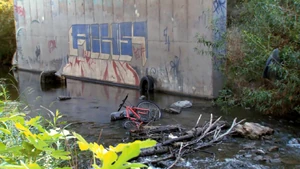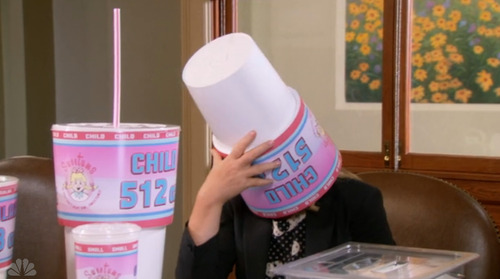Dreams do come true in New
Orleans. Dr. Reams, thank you for being my trusted mentor and committee chair
in the midst of my doubt. Your confidence in my abilities ignited a sincere
passion in me I had not felt since elementary school. I am here because of the
countless hours you, Dr. Dismukes, Dr. Lam, and Dr. Keim invested into my studies, my
thesis, and most importantly, myself. I am forever in debt because you took a
chance on a student with a questionable GPA and an eagerness to prove himself.
I would also like to than Lauren DeFrank for providing me with invaluable
insight into her thesis which was a foundation for my writing and research. I
would also like to thank the National Science Foundation and LSU Center for
Energy Studies for funding that allowed me to conduct my research for this
thesis.
Mom, I did it! You are my
rock and strength in the quiet times when I needed reassurance in my faith and
mission. I love you more than I’ll ever be able to express. Dad, you’ve always
been there for me. I never had a question you didn’t have an answer to, and the
right one to boot. You believed in me and trusted me to this end. I can only
hope to be a fraction of the father and hero you are to me someday.
Michael, you and I share a
special bond. You don’t even need to read this to know what I’m about to say.
We cried as babies, we fought as children, we competed as teenagers, and we are
inseparable as adults. You’re the best brother in the world and no matter where
our lives take us, you will always be the person I turn to for everything
first.
My family is amazing.
Without them I wouldn’t have this opportunity to succeed beyond my highest
expectations. My cousins deserve a special mention: Rookie, Nick, Shanti, and
Tiffany. Thanks for being there every step of the way!
I can’t begin to thank all
of the families who have welcomed me into their homes and made me an adopted
son in my time in Baton Rouge. Jeannie, Mike, Christian, and Katie; there’s a
reason luck is part of your last name. I am so lucky and blessed to know you!
Cheryl, Chad, Logan, Lance, and Leah; thank you so much for being there for me
from the very start and helping me every step of the way. All of the awesome
advice in life and in Christ I received from one member of my “families” or
another is the most invaluable resource I will have from my time in Baton
Rouge. To Bonnie, John, Jackie, Meg, and Matt Begue; words cannot express how
lucky I am to have you all as a sounding board to laugh, think, and celebrate.
Same for the Brodnaxes, Catos, Noels, Sieberths, Struppecks…the list goes on
forever. Thank you for all of your support and prayer. You all mean the world
to me.
First Presbyterian, you have
my heart. Every Sunday I would be greeted with handshakes and hugs whether I
had the greatest or worst week ever. The lessons I learned from the kids in
Children’s Ministry will ring truer than any lesson given in a collegiate
classroom. As I prepare to move further into the world, I can say with
conviction my bond with Christ is so much deeper because of you. From Pastor
Gerrit’s sermons to the indescribable fun I’ve had in Kingdom Kids and Quest
and VBS, I hope I’ve made as huge an impact on the life of my church as you
have on me.
All of my Teen Titans
deserve a shoutout. You guys dealt with me at Blast From The Past and VBS,
rolled your sleeves up to work, and got to prank me way too many times. The
most fun I’ve had on this journey was with you. Jackie, you are my best
friend and little sister I never had. I can’t wait to see you write your own
amazing story. Anna, David, Jonathan, Sloane, Anna Catherine, Savannah,
Elizabeth, Claire, and Alaina; you guys are all superheroes. If you learn
anything from me, wear the socks and bring the chaos.
Every actor needs a
supporting cast to be great, but my best friends are much more than that. They
deserve the spotlight as well. Gus, without your caffeine and friendship I
would never have gotten this far. Tiffany, your candor for GCCS led me to this moment and I hope you will be
inspired by mine as well. Celeste, your kindness and compassion have done more
than wear off on me, not to mention your perseverance and brilliance! Brittany,
your future is so bright I needed sunglasses to write this sentence. I am so
lucky to have every one of you in my life.
New Orleans, you were my
first love. You raised a native son who will carry in him a black and gold soul
forever. This is for you, not to grieve over Katrina, but to remember those
days as a reminder that out of the most terrible of tragedies a hope can arise
that sings to all corners of the world a song of salvation, love, redemption,
and rebirth. As Chris Rose said, “to be engaged in some small way in the
revival of one of the great cities of the world is to live a meaningful
existence by default.”
My final acknowledgement is
for my mentor, Mr. Nathan Woods. You passed far before this dream was realized,
but you imbued me with a talent for service. You led me to the Gardere
Community Christian School and gave me the heart for all of these kids and this
neighborhood through the Red Ball Express. This is my novella writ because of
you.
I know I’m not home, but I’m
on my way. But in the meantime, I’m tired of the things that are. This is but a
stepping stone to a new story, a fairy tale I will read openly. Most will agree that a man should not read fairy tales, but “when I became a man I put away
childish things, including the fear of childishness and the desire to be very
grown up.” All grown-ups were once children, but only few of them remember it.
Here’s to happily ever after.



